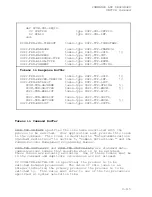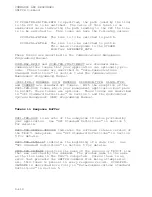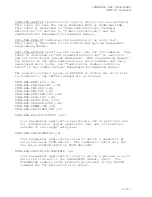
TR3271 EVENT MANAGEMENT
Event-Management Programming
Any of the tokens in an event message can be used for selecting
the event messages returned to an application. You can create
filters that return only critical event messages, all event
messages associated with a particular device, all event messages
with a certain event number, and so forth.
For more information about filters, refer to the
Event Management
Service (EMS) Manual.
EVENT-MESSAGE DESCRIPTIONS
Each event message that can be issued by the subsystem is
described on the following pages. The descriptions are given
in ascending order by event number; that is, in ascending order
by the ZTR3-EVT-values followed by ZCOM-EVT-values that all
communications subsystems must provide.
Within each event-message description, there is a box that lists
all the tokens that can appear in the event message. Header
tokens are listed here because an application can filter event
messages by header tokens as well as by other tokens; for
example, the subsystem ID. These tokens are divided into three
categories:
1. Unconditional tokens (tokens that are always present in the
event message)
2. Volatile tokens (tokens that are subject to change from
release to release)
3. Tandem internal tokens (those intended for Tandem use only)
The order in which tokens are presented in the token sections
of the syntax box is arbitrary, except that the token ZEMS-TKN-
SUBJECT-MARK always immediately precedes the subject token of an
event message. For more information on the subject token, refer
to the
Event Management Service (EMS) Manual.
Note that some of the events include the ZEMS-MAP-EXIOADDR and
ZEMS-TKN-CU. If the event is for a controller that uses the
subchannel-type I/O addressing scheme and conversion from the
physical I/O address to the subchannel controller unit (CU)
address format is possible, both of these tokens will be present
in the event message buffer.
7-4
















































